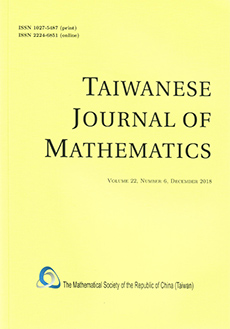Abstract
In the present paper, it is shown that the linear wave equation subject to Dirichlet boundary condition \[ u_{tt} - u_{xx} + \varepsilon V(\omega t, x) u = 0, \quad u(t,-\pi) = u(t,\pi) = 0 \] can be changed by a symplectic transformation into \[ v_{tt} - v_{xx} + \varepsilon M_{\xi} v = 0, \quad v(t,-\pi) = v(t,\pi) = 0, \] where $V$ is finitely smooth and time-quasi-periodic potential with frequency $\omega \in \mathbb{R}^n$ in some Cantor set of positive Lebeague measure and where $M_{\xi}$ is a Fourier multiplier. Moreover, it is proved that the corresponding wave operator $\partial_t^2 - \partial_x^2 + \varepsilon V(\omega t, x)$ possesses the property of pure point spectra and zero Lyapunov exponent.
Citation
Jing Li. "Reducibility, Lyapunov Exponent, Pure Point Spectra Property for Quasi-periodic Wave Operator." Taiwanese J. Math. 24 (2) 377 - 411, April, 2020. https://doi.org/10.11650/tjm/190505
Information





